- The M. H. de Young Memorial Museum
- Through March 15, 2020
The two-decade period covered by this exhibition was one of enormous racial tumult, protest and violence, of a head-on clash of old and radical new values and, like most periods of conflict, a time that spawned an outpouring of creative expression. I am likely not the best candidate to comment on the political and social ramifications of the exhibit. Those may be garnered from the information provided throughout the show, the audio tour and the excellent catalogue. However, as an artist, I would like to provide my impressions of the art in the exhibit both because there are some exceptional works and because many of these African American artists may not be as known or as well represented as their white contemporaries.
Romare Bearden is known for his colorful and often compositionally complex collages. His works in this show are monochromatic photostats of the original colored collages, in keeping with the 1965 exhibit by Spiral, the group he founded, to be a show of all black and white art. Taking the color out served to intensify the light and dark values of the compositions as in his 1964 The Dove.
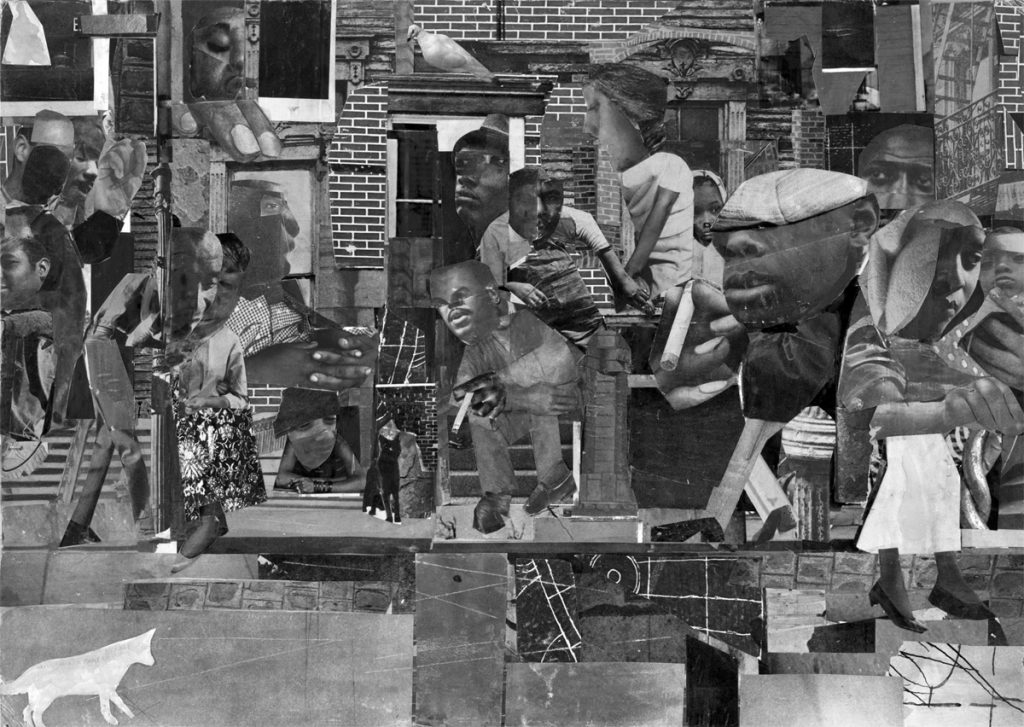
There are other painters represented from the Spiral show but one, in particular, caught my attention. The oil painting Untitled from 1964 by Emma Amos is a rich exploration of brush work and texture, light and dark values, and nearly abstract except for what I see as the linear suggestion of a hand in the painting’s center.
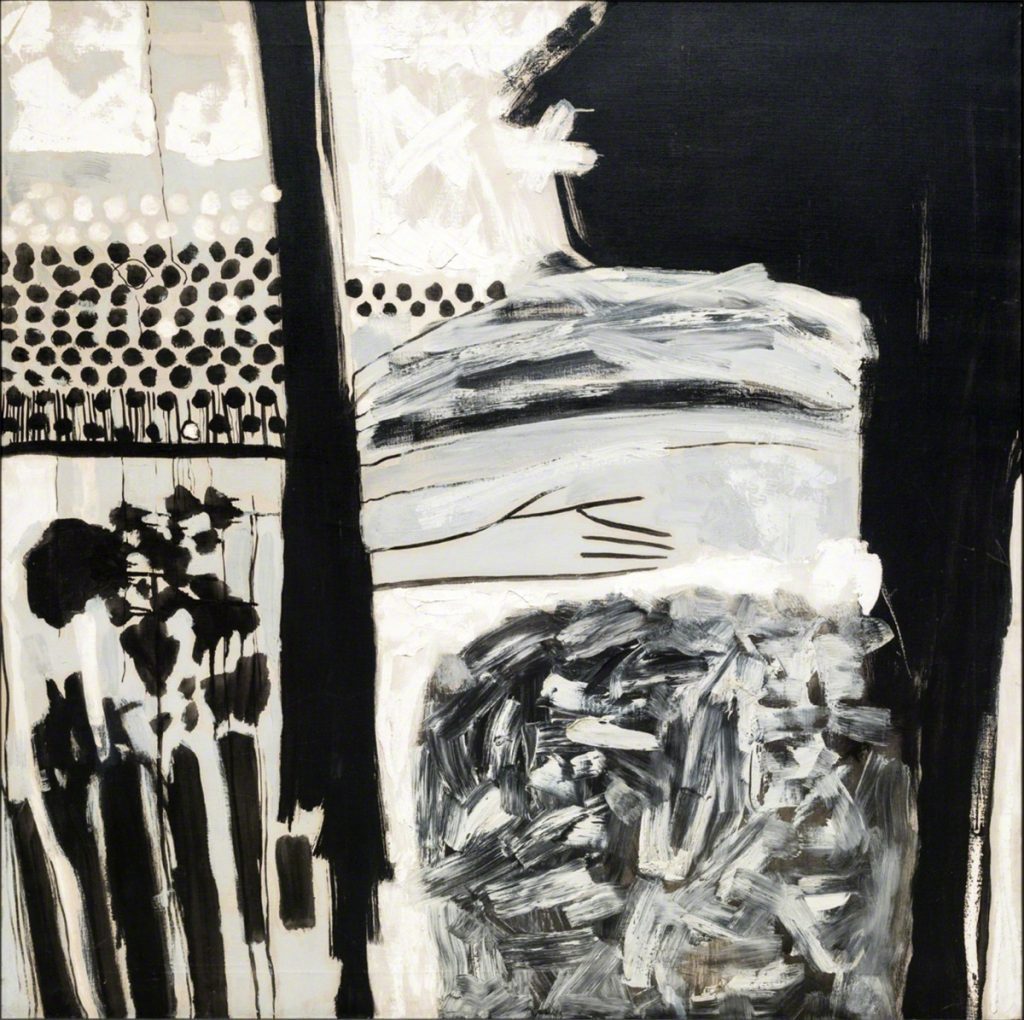
Timothy Washington’s Why from 1971 is a bold and stark image, beautifully drawn, and full of symbolism. His works in this show are composed of paint on engraved aluminum and this one has the addition of two nails jutting from the surface.
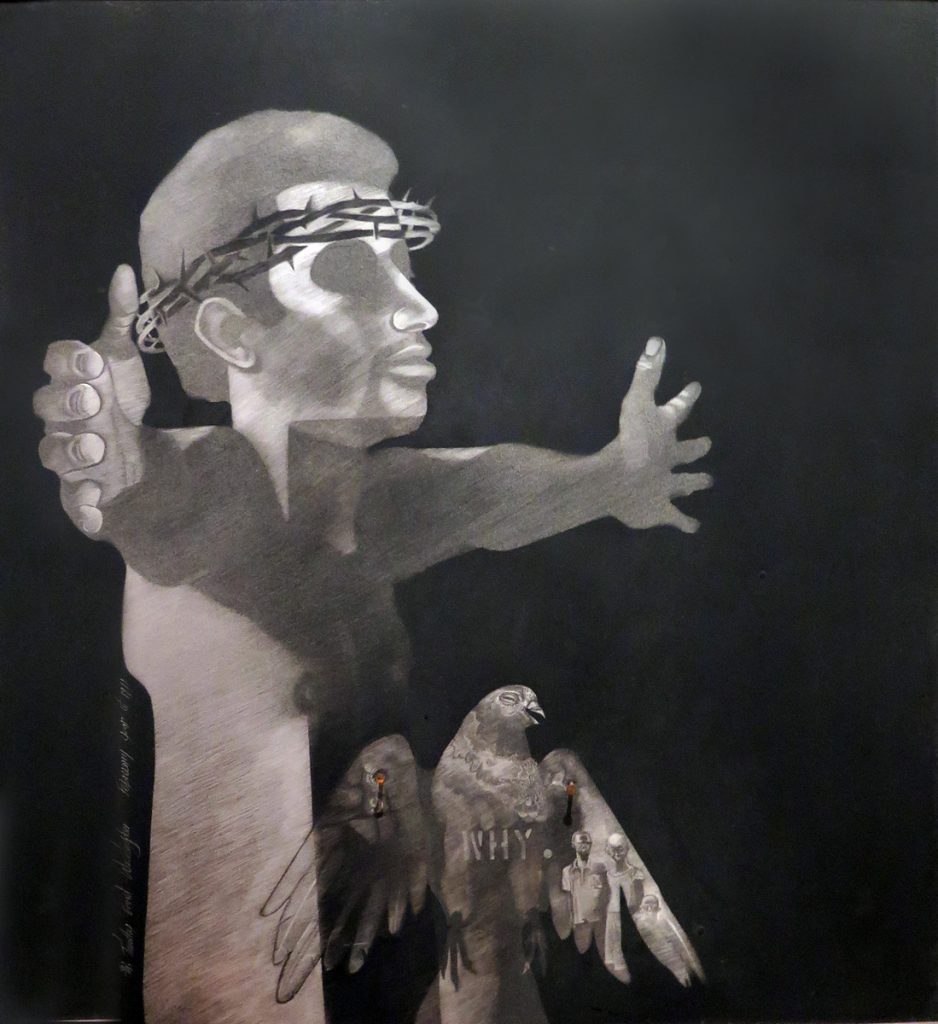
Noah Purifoy’s mixed media Watts Riot from 1966 utilizes pieces of burnt and charred materials that evoke the violence and destruction of the event that gives it its title.
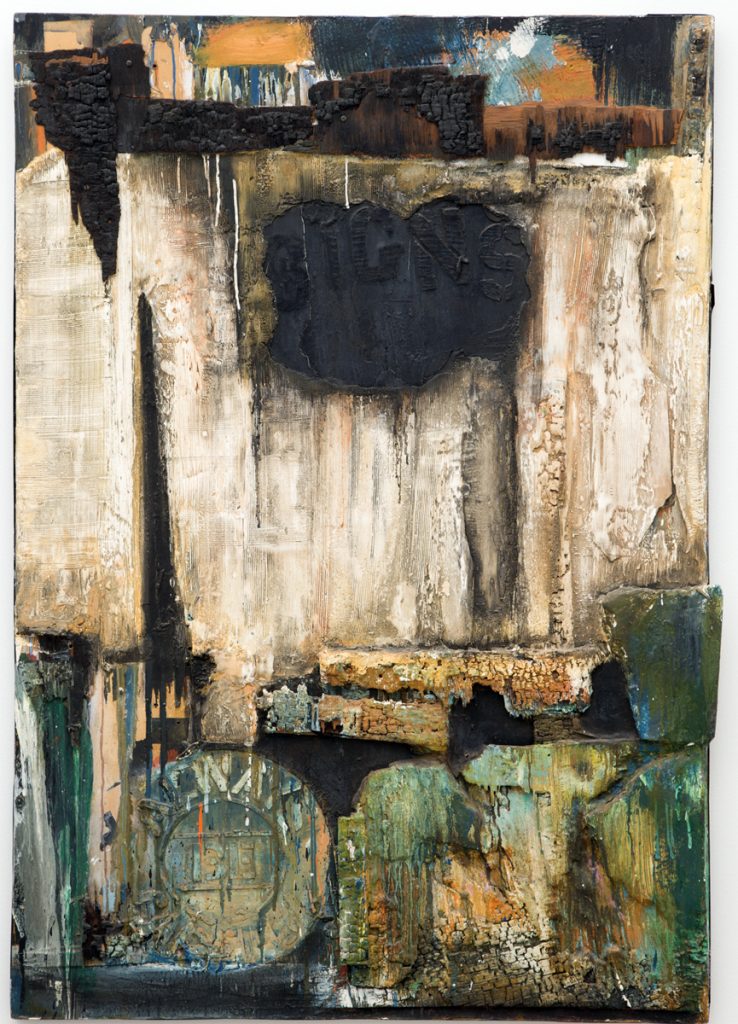
As a black woman artist, Betye Saar’s 1972 construction, The Liberation of Aunt Jemima (1), invites close scrutiny. Not only is her object beautifully constructed but it is also packed with meanings both overt and subtle.
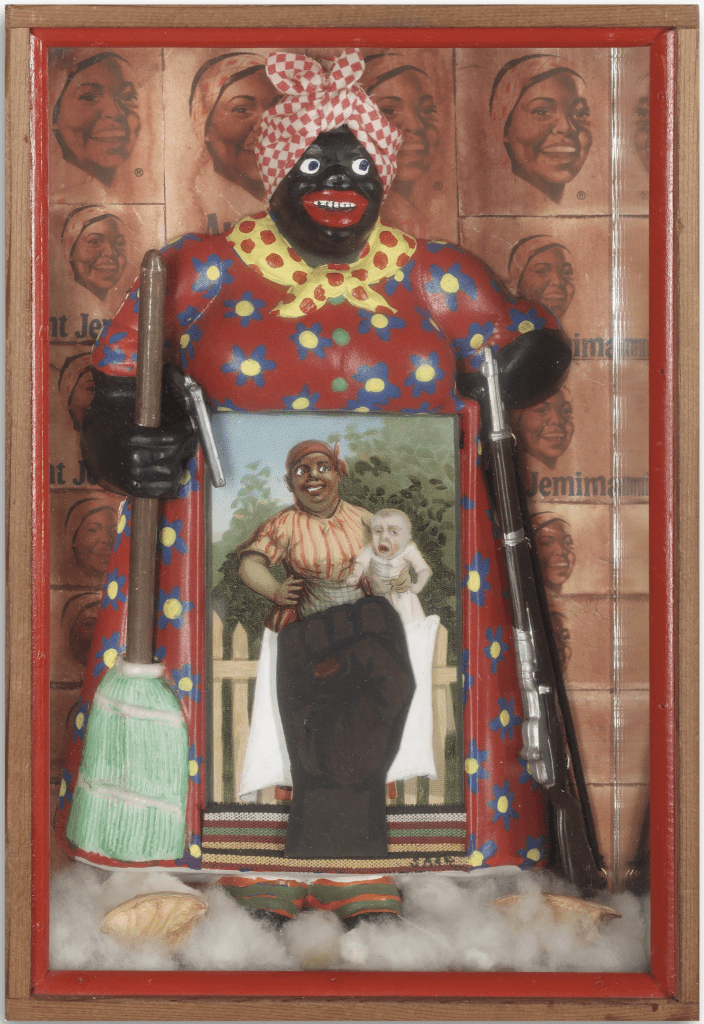
There is a wide range of painting style and technique represented in the show. Faith Ringgold’s large 1967 oil, American People Series #18: The Flag is Bleeding (2), might bring to mind some of the more mainstream hard-edge painters of the decade were it not for the violent subject depiction.
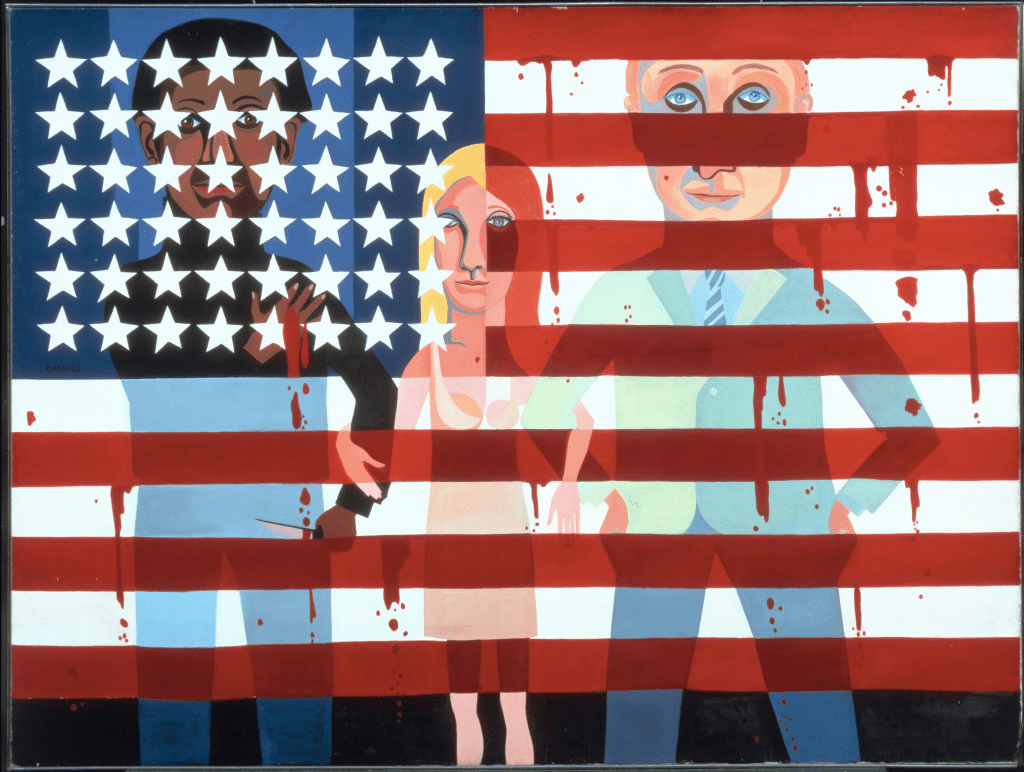
Blood (Donald Formey) is a 1975 oil and acrylic tonal painting by Barkley Hendricks with such vibrant reds that it catches one’s attention from the far side of the gallery in which it is hung.
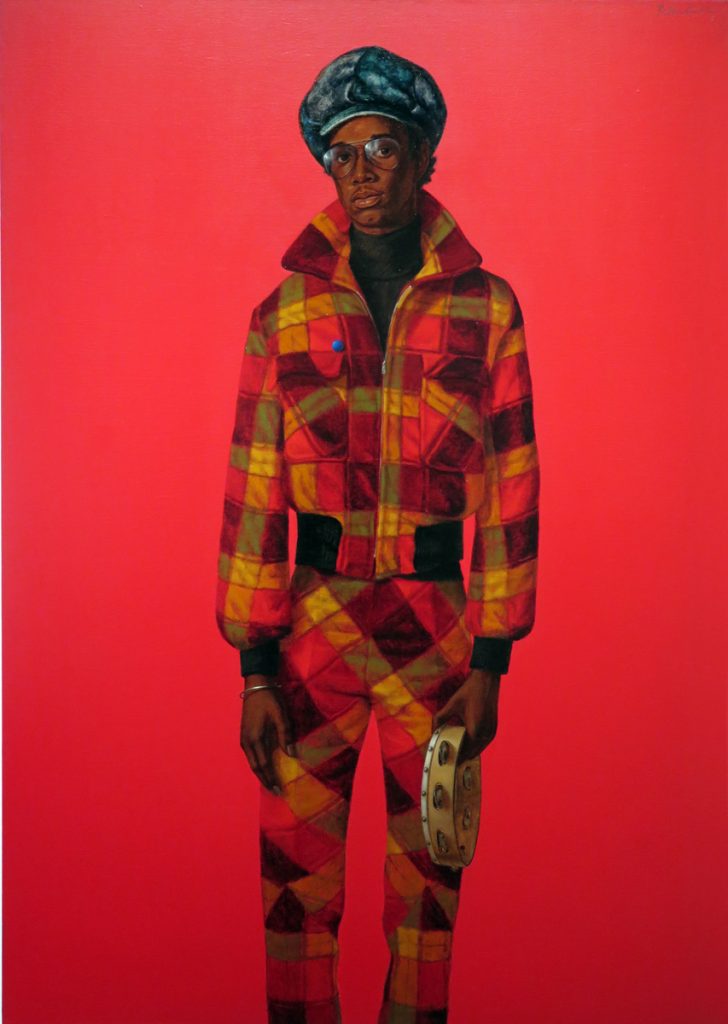
Jack Johnson, the very large 1971 oil by Raymond Saunders is a tour de force of painterly painting. Its scale projects the subject’s presence into the distance while the detail of brushwork, paint spatter and line invite one to approach and enjoy it from close up.

There are also a number of purely abstract paintings, a few of which are monumental in size, including Sam Gilliam’s 1970 acrylic on draped canvas Carousel Change (3).
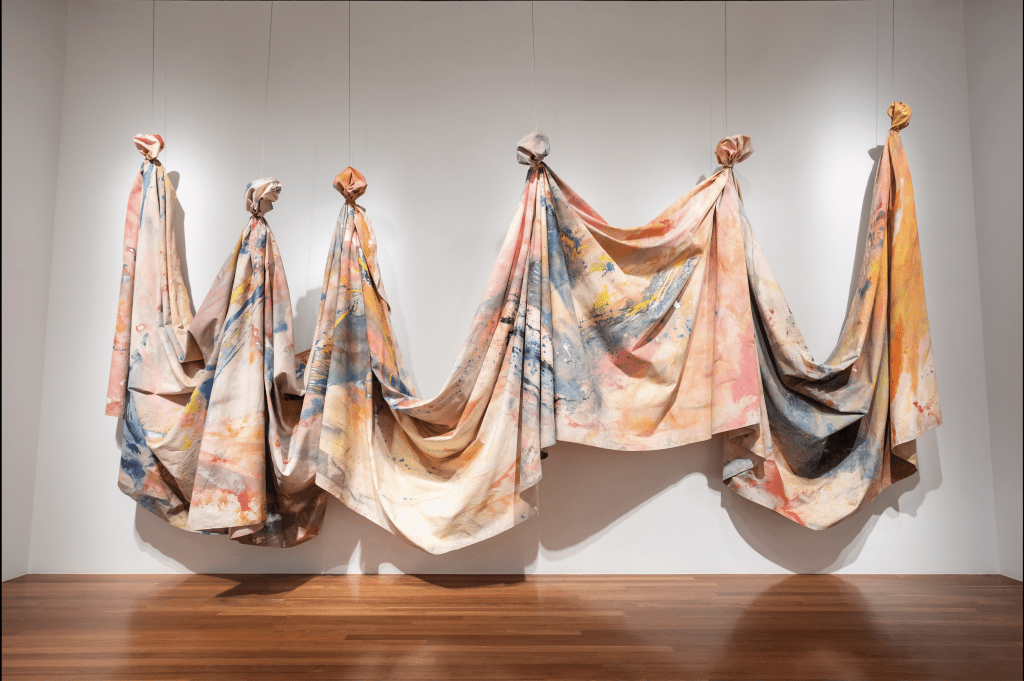
The exhibit also features a range of sculptures and three-dimensional objects. One of the show-stoppers for me is a scrap metal sculpture from 1970 by John T. Riddle Jr., Gradual Troop Withdrawal, a literal gut-wrenching depiction of a soldier at the moment of infliction.

Two other wall-hung sculptures captured my imagination. Bag Lady in Flight, a 1990 mixed media construction by David Hammons, may seem at first glance whimsical and certainly lyrical in its illusion to flight but on closer inspection one realizes that the materials used – greasy paper bags and black hair – conjure up elemental associations to the black community from which he worked.
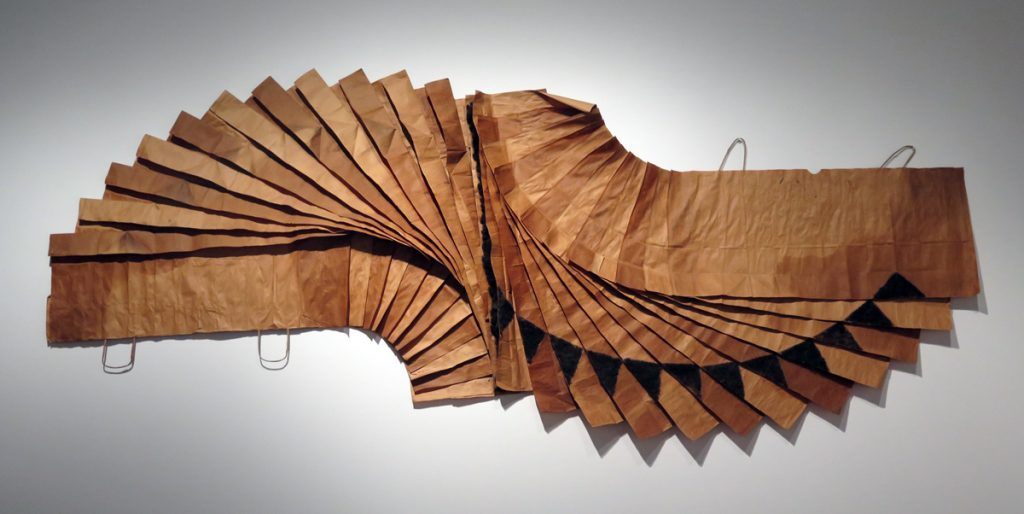
Color in Art, a 1976 assemblage of wooden shutters, a book and other common materials by Randy Williams is near to the close of the exhibit and sums up its themes, both nuanced and violent. Metaphors abound: the magazine Color in Art with its center cut out to reveal a black and white interior, closed shutters begging the question of what lies beyond, a twist of rope, staples and nails and that peculiar green divide; what does it all mean?

Williams says, in part, in his Artist’s Statement (link below), “Making art is my salvation and my burden.” Walking through this exhibit I became conscious of the quiet. Few people spoke and if so they spoke quietly to one another. This is a somber show. Some of the art carries a punch. The exhibit is a revelation of masterful art, of deep wells of talent within the black artistic community of the period, and, in fact, the soul of our nation. https://randywilliams.net/artists-statement/
***
The views and comments posted here are those of the author and do not necessarily reflect those of The Gearbox Gallery or its other members.
For her kind permission to use selected photos in this post, the author would like to thank Miriam Newcomer, Director of Communications, Fine Arts Museums of San Francisco, de Young / Legion of Honor.
Photographic credits – Photography by the author except as follows:
Header: Installation Photography of “Soul of the Nation: Art in the Age of Black Power 1963-1983,” at the de Young museum. Photography by Gary Sexton.
(1) Betye Saar, “The Liberation of Aunt Jemima,” 1972 Wood, cotton, plastic, metal, acrylic paint, printed paper and fabric. Image: 11.375 x 8 in. (29.8 x 20.3 cm). Collection of Berkeley Art Museum and Pacific Film Archive, Berkeley, California; purchased with the aid of funds from the National Endowment for the Arts (selected by The Committee for the Acquisition of Afro-American Art). Courtesy of the artist and Roberts Projects, Los Angeles, California. Photo Benjamin Blackwell. Image courtesy of the Fine Arts Museums of San Francisco.
(2) Faith Ringgold (born 1930), “American People Series #18, The Flag Is Bleeding”, 1967. Oil on canvas. 72 x 96 in. (182.9 x 243.8 cm). From the artist’s collection. © 2019 Faith Ringgold / Artists Rights Society (ARS), New York, Courtesy ACA Galleries, New York / Photo courtesy of Faith Ringgold / Art Resource, NY.
(3) Installation photo of Sam Gilliam’s “Carousel Change” in “Soul of the Nation: Art in the Age of Black Power 1963-1983” at the de Young museum. Photography by Gary Sexton.
